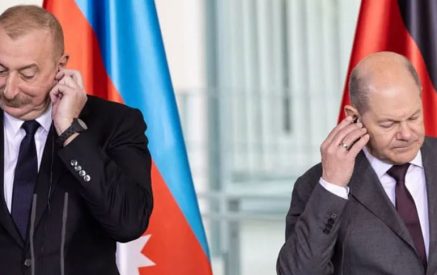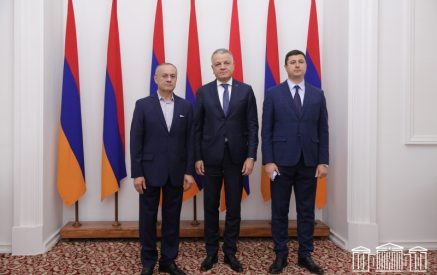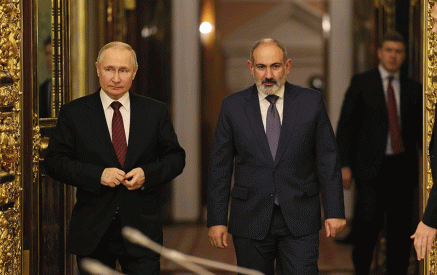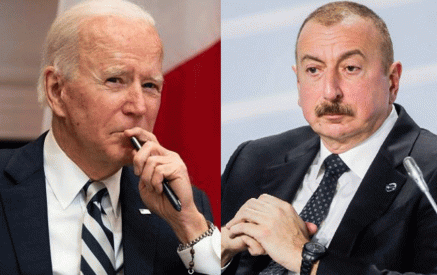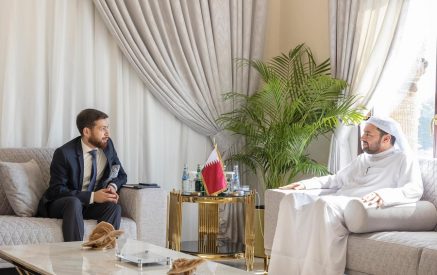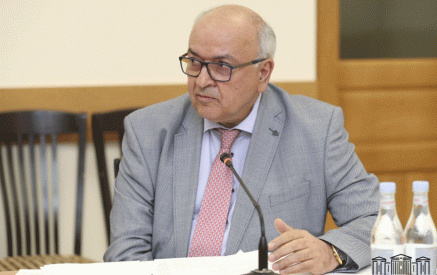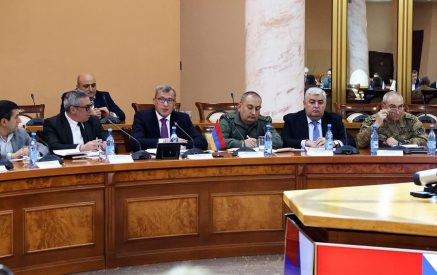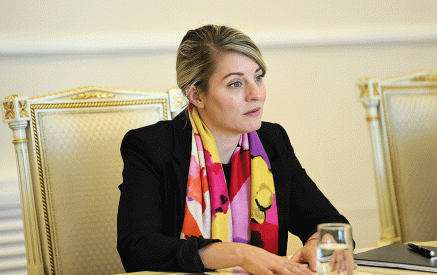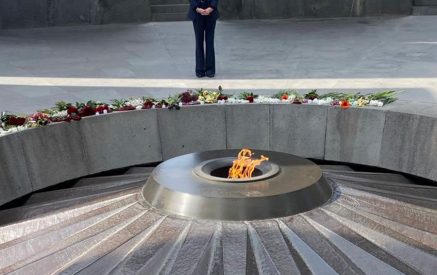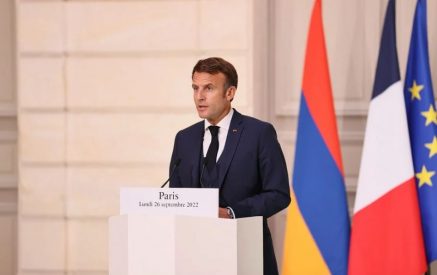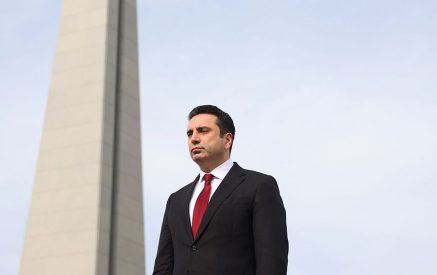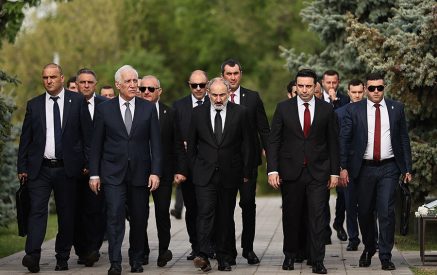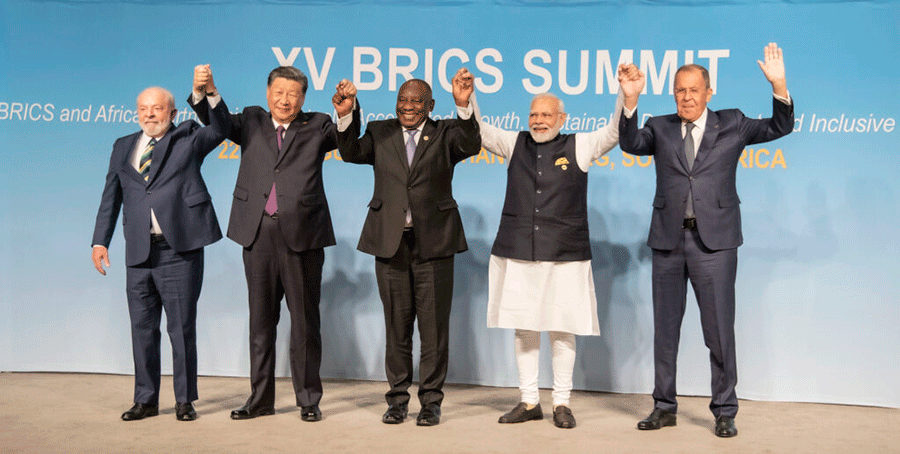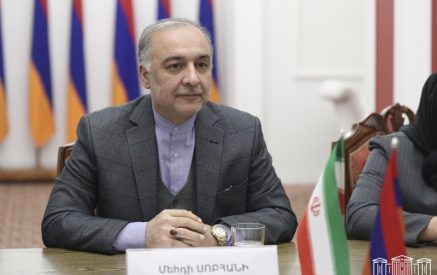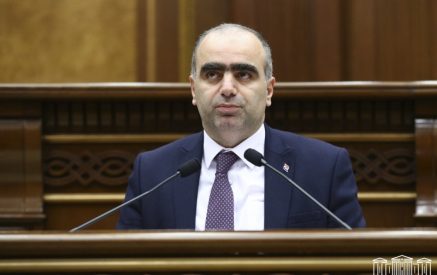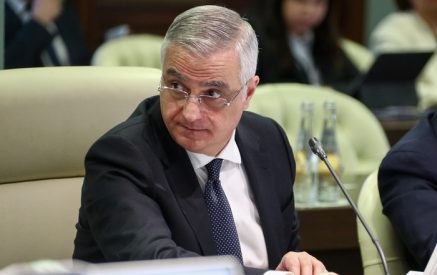by Yeghia Tashjian
The BRICS summit, hosted by South Africa from Aug. 22-24, 2023, came amid a tumultuous, almost entropic period in global politics. Intensifying U.S.-China competition and the war in Ukraine have emphasized geopolitical fault lines. Meanwhile, many newly-formed medium-sized powers, frustrated by U.S. foreign policy, have reduced their dependency on U.S. currency while increasing bilateral trade in their own currencies in order to challenge the unipolar system and raise their concerns. For such countries, joining non-Western blocs such as BRICS has been a main objective.
BRICS is a group of emerging economies made up of Brazil, Russia, India, China and South Africa. Economist Jim O’Neil predicted that by 2050 BRICS would surpass the wealth of the major: Argentina, Egypt, Ethiopia, Iran, Saudi Arabia and the United Arab Emirates. BRICS may face certain internal challenges. While China and Russia have their own agendas against the West, India, Brazil and South Africa want warm relations and to avoid sanctions. The expansion of BRICS will nonetheless have an impact on the emergence of the new world system and Eurasian politics. As India and Russia push for north-south connectivity along the International North-South Transport Corridor (INSTC), the membership of Persian Gulf countries Saudi Arabia, the Emirates and especially Iran (which recently also joined the Shanghai Cooperation Organization, or the SCO) will further accelerate regional trade interconnectivity and increase Russia’s influence in the South Caucasus, which is the key linkage between Russia and the Persian Gulf.
Read also
BRICS as an Emerging Economic Power Amid Global Challenges
BRICS encompasses about 26.6-percent of the gross world product and 32.5-percent of Global GDP in Purchasing Power Parity (PPP). BRICS was formed to highlight investment opportunities between the member states, yet gradually it became a cohesive geopolitical bloc. Bilateral relations between the member states are conducted on the basis of non-interference, equality and mutual benefit. BRICS is considered the foremost geopolitical rival to the G7 bloc of the U.S.-led leading advanced economies (U.S., U.K., Canada, France, Germany, Italy and Japan, with the EU as a non-enumerated member).
BRICS has been pushing for de-dollarization, yet there is a lack of unanimity on how this process will be shaped. As I mentioned in my recent article reflecting on discussions during the St. Petersburg International Economic Forum, “BRICS is becoming a rising de-dollarization coalition, with the group developing multiple de-dollarization initiatives to reduce currency risks and bypass U.S. sanctions. However, it is far from reality, at least for now, to argue that the group will initiate a common currency replacing the U.S. dollar. During the panel debates, many opposing ideas were presented from different representatives of member states. All member states aimed for de-dollarization, but none are in favor of a common currency to replace it, even though they aim to establish a ‘polycentric global monetary system by promoting the internationalization of the currencies of member states.’” BRICS member states will continue trading with their local currencies instead of using the dollar until a unanimous agreement is reached to institutionalize de-dollarization and come up with an alternative currency. To this end, Russia has crafted a joint strategy between the members of BRICS, the SCO and the Eurasian Economic Union (EAEU) to increase the use of national currencies in trade.
Another challenge facing the bloc is the significant difference in the foreign policies of its member states regarding the U.S.-led unipolar world system and a clear and consistent vision of a multipolar order. In his book The Poorer Nations: A Possible History of the Global South, Indian Marxist scholar Vijay Prashad said that the bloc has its limitations compared to the West. Prashad argued that BRICS has neither established new institutions to counterbalance the West nor come up with an alternative ideology for neoliberalism. He says BRICS has no ability to challenge the primacy of the U.S. and NATO.
The Expansion of BRICS and Internal Pluralism
Since 2022, BRICS has sought to expand its membership, as several developing and new rising powers have expressed their interest in joining. At the 15th BRICS summit in South Africa, BRICS announced that six new emerging market economies will join the group and full membership will take effect on January 1, 2024. According to many political analysts, the main objective behind this expansion is building a multipolar world system to increase the marginalized voice of the Global South. Between 2022 and 2023, over 40 countries have expressed interest in joining BRICS, including Cuba, Indonesia, Kazakhstan, Kuwait, Venezuela, Turkey, Mexico, Uruguay and Pakistan.
BRICS accounts for 40-percent of the world’s population and a quarter of global GDP. Adam Gallagher and Andrew Cheatham argued in the United States Institute of Peace that “adding to the bloc means that BRICS would be a stronger and more influential group, further advancing multipolarity.” “Despite divisions among the BRICS members, there is an emerging consensus that the international order is not working and a new one is needed,” the article reads. Each member state has its own perspective on worldview and the expansion of the bloc, with notable differences between India and China.
Gallagher further argues that Russia is “keen on advancing a multipolar world and sees BRICS expansion as a way to undermine the liberal international order.” Following its invasion of Ukraine, Russia has looked to the Global South, mainly Africa and the Persian Gulf, to facilitate trade relations and bypass Western sanctions. He says the presence of dozens of members at the summit was seen by Russia as a “positive signal regarding its international standing.” China also views the bloc as a tool to shape the global system and an alternative world order to that led by the U.S. China has been in favor of its expansion, arguing that economic distress in some of the BRICS countries is “weakening the BRICS countries’ common identity, position and enthusiasm to continue promoting the cooperation mechanism,” as argued by Antara Ghosal Singh. As the era of the post-pandemic rapid economic growth in Brazil, South Africa and Russia has passed, adding new members to the bloc could accelerate economic activity within member states and around the globe. Moreover, China wants to take advantage of the war in Ukraine, which has brought Europe into a “new Cold War environment,” to promote its global agenda and connect newly emerging economies to its supply chains, such as by connecting them through the Belt and Road Initiative.
Cheatham and Gallagher also agree that the U.S. fears that China may use BRICS as a tool to consolidate its position globally. They argue that the world is seeing a “new wave of ‘minilateralism’ – a style of diplomatic engagement that gives prominence to small- and medium-sized coalitions of like-minded states.” This trend will be accelerated with the expansion of BRICS. The U.S. is concerned that China is taking advantage of this process and positioning itself as the leader of the emerging multipolar world.
Although Brazil and India are cautious not to turn the bloc into an anti-Western coalition, China and Russia have used it as leverage against the West. After Russia’s invasion of Ukraine, many countries around the world were expected to take sides, and blocs such as BRICS give rising middle power the space to raise the voice of the Global South.
Initially, Brazil and India were not in favor of expansion, fearing that it would “dilute their influence and impact their non-aligned foreign policies.” On the other hand, China and Russia were pushing the expansion of BRICS as a “counterweight to the Group of 7 and other Western-led alignments.” Brazil, isolated from Eurasian political developments, does not have as much diplomatic weight as Russia or China to shape global affairs and believes that the expansion of the bloc would diminish its influence as a leader in the Global South. As Andre Pagliarini has argued, “Brazil’s enduring embrace of the UN suggests that it does not aspire to a global order hostile by definition to the U.S., but rather one in which Washington is more inclined – even if compelled – to listen to others.”
Meanwhile, India, which possesses the largest population in the world, is wary of the bloc becoming anti-Western in orientation and being used as a tool by China to increase its influence in Asia and around the world. One of the founding nations of the non-aligned movement during the Cold War, New Delhi has carried this legacy even in today’s current great power competition. While India is also a member of the SCO, its political relations with the U.S. keep expanding, and it works with Japan and Australia to counter China’s expansion in the Indo-Pacific. India has its own interest in becoming a world economic power. While China’s economic engine may be sputtering at the moment, Bloomberg Economics predicts that India is ready to “pick up the slack and could boost the BRICS’ share of global GDP to more than 40% by 2040, compared with 32% last year.”
The Impact of the Expansion of BRICS on the South Caucasus
Iran’s accession to BRICS is a win for Russia, India and China. Moscow and Beijing have been trying to integrate Iran into their regional architectures. This was clear during Iran’s accession to the SCO in 2023, in an attempt by Russia and China to bring Iran into their orbit amid a possible breakthrough on nuclear negotiations between Iran and the West. Iran is an important partner for Russia to push its regional agenda in the Middle East (mainly Syria but also in Iraq and Lebanon). The China-brokered diplomatic rapprochement between Iran and Saudi Arabia was a diplomatic victory for Moscow to minimize U.S. influence in the region.
Iran’s membership announcement in BRICS came amid intensified diplomacy to reduce its isolation and boost its economy by strengthening ties with Russia, China and India and improving its diplomatic relations with its Arab neighbors. The Islamic Republic has the second largest worldwide gas reserves and is rich in oil. It has a geostrategic location bordering 13 countries with access to the Persian Gulf, Caspian Sea, Central Asia and the South Caucasus. It is also part of China and India-backed international transit corridors. Normalization between Iran and the Persian Gulf Arab countries, in addition to Chinese investments in these countries, could reduce disputes and promote dialogue.
During the recent BRICS summit, Iran’s President Ebrahim Raisi said that the “Iranian leadership sees BRICS’ challenge to the conventional economic order as an opportunity to weaken U.S. influence on the global stage.” Iran’s accession will have an impact on the South Caucasus, especially on those countries that are participants in the International North-South Transport Corridor (INSTC). On August 27, the General Director of the Railway Company in Iran announced the transit of Russian cargo to Saudi Arabia through the Iranian section of the INSTC. This will further push Iran and Russia to finalize the construction of the remaining section of the railway, the Astara-Rasht railway, connecting Azerbaijan to Iran.
Divyanshu Jindal, a Research Associate at NatStrat, Center for Security and Strategic Studies in India, told the Armenian Weekly that “INSTC has been a landmark connectivity project for expanding India’s trade outreach with Central Asia and Russia and is being seen as a major corridor for connectivity with Europe. Not only does this help the member states reach new markets, but the corridor holds immense potential in kickstarting economies in the decade ahead. As the world’s focus shifts toward Asia, the Eurasian region and various projects involved around it (like the Eurasian Economic Union) will only increase in significance.”
Jindal argued that India is interested in playing a significant role in regional connectivity and trade. He said the Persian Gulf-Black Sea corridor proposed by Iran and Armenia is the ideal parallel corridor to the INSTC, given the warm relations between Iran, India and Armenia and the strengthening of defense ties between India and Armenia. Armenia can become a major transit hub serving as a gateway to European markets and further enhancing Yerevan’s regional security.
Iran’s accession to BRICS and the implementation of new economic projects around INSTC make the bloc attractive to Armenia and Azerbaijan. As Georgia has its path clear towards trans-Atlantic institutions, pressure may increase on Armenia and Azerbaijan to join similar blocs in the future. Meanwhile, integrating the infrastructure of the South Caucasus into the Eurasian regional system has been the objective of Russia for the past years. However, a competition may emerge between different geo-economic projects in the region, such as the Turkish-Azerbaijani backed “middle corridor” and the Russian-Iranian-Indian backed North-South corridor. It is crucial to see where China will be positioned in these competitive projects. Global powers such as the U.S. would not be happy to see the South Caucasus serve as a bridge between Russia, Iran and the Persian Gulf, which could trigger new conflicts.
Armenia has some options to choose from. The unblocking of communication channels between Baku and Yerevan is far from reality for the time being due to Azerbaijan’s blockade of Artsakh and its aggressive attitude towards Armenia. Instead, Yerevan should keep promoting the Black Sea-Persian Gulf corridor. By doing so, Yerevan would keep its window open to the West, offering itself as a crucial transit hub between Europe and India and a highway connecting Russia to the Middle East via Iran. Such a step may bring certain risks, yet proactive diplomacy from Armenia’s side may repel pressures from competing global powers.
Economic interconnectivity is crucial for the South Caucasus, as it could bring foreign investment and stability. Politically, the facilitation of trade along the INSTC corridor will consolidate Russia’s influence in the South Caucasus and Iran’s position as a bridge between the Caucasus and the Persian Gulf. Meanwhile, small- or medium-sized countries, to preserve their strategic position in the region, will continue to balance alliances or bandwagon and join regional economic groups.




